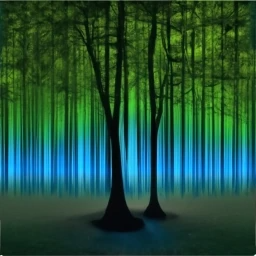Interaction Between Forest & Vegetation Canopies
with Wireless Technology - NASA 1993 Study

to: Dianne Knight
date: 8 April 2018 at 19:09
The attached 1993 NASA / University of Texas (Arlington) study conducted over a wide range of 5G and the current LTE frequencies, as well as others, indicates in detail how emissions interact with forest and vegetation types, including associated ground cover.
It indicates as well that especially at the higher frequencies: 3-4 GHz and beyond, to the 5G ones "multiple scattering" (electromagnetic hash) is much more impactful. In the 1993 period, such effects could be generally produced by radar installations (back-scattering) but now with hundreds to thousands of source emissions from various angles and heights + those from satellites, the "multiple scattering" factors accumulates interactions observed by the scientists at UTA.
This is a excellent reference document that is handy for any geophysical analysis not only by wireless technology providers but also for those who have the mandate to oversee the welfare of humans, fauna and flora.
The study does not include interaction with water.

A scattering model for forest or vegetation, based on the theory of electromagnetic wave scattering in random media, is described. The model generalizes the assumptions imposed by earlier models, and the results compare well with measurements from several forest canopies. It is shown how the model elements are integrated to obtain the scattering characteristics of different forest canopies. The scattering characteristics may be displayed in the form of polarimetric signatures, represented by like- and cross-polarized scattering coefficients, for an elliptically polarized wave, or in the form of signal distribution curves. Results illustrating both types of scattering characteristics are given.
Published in: IEEE Antennas and Propagation Magazine
( Volume: 35, Issue: 2, April 1993 )
doi: 10.1109/74.207648
keywords: {atmospheric electromagnetic wave propagation;electromagnetic wave polarisation;electromagnetic wave scattering;Arlington;University of Texas;cross-polarized scattering coefficients;electromagnetic wave scattering;elliptically polarized wave;forest canopy;like-polarised scattering coefficients;polarimetric signatures;random media;research;scattering characteristics;scattering model;signal distribution curves;vegetation canopy;Electromagnetic modeling;Electromagnetic radiation;Electromagnetic scattering;Frequency;Optical scattering;Optical surface waves;Random media;Remote sensing;Soil;Vegetation},
URL: http://ieeexplore.ieee.org/stamp/stamp.jsp?tp=&arnumber=207648&isnumber=5314



Educational and Informational Purposes: All information on this
site and all links that are linked to from StayOnTheTruth.com represent
solely the opinions of their producers.
This
information and links to more information are made available to you as a
resource for your own research and evaluation not as an endorsement.
StayOnTheTruth.com is not
in the business of persuading you or anyone else to believe anything
that that is presented linked to from this site; however, it does
encourage you to use all available resources to form your own judgement
about very important things that affect your life.
Fair Dealing and Fair Use Notice: The material on this site is provided for educational and informational purposes. It may contain copyrighted material the use of which has not always been specifically authorized by the copyright owner. It is being made available in an effort to advance the understanding of scientific, environmental, economic, social justice and human rights issues etc. It is believed that this constitutes a 'fair dealing' or 'fair use' of any such copyrighted material as provided for in copyright law. In accordance with the Fair Dealing or Fair Use intention, the material on this site is distributed without profit to those who have an interest in using the included information for research and educational purposes. If you wish to use copyrighted material from this site for purposes of your own that go beyond 'fair dealing' or 'fair use', you must obtain permission from the copyright owner. The information on this site does not constitute legal or technical advice.
© Copyright 2025. "Stay On The Truth", Dianne Knight. All Rights Reserved.
Landline Telephone
(416) 551-7259
Please Note:
Landline Telephone cannot receive a text message and without any notification if sent.
Mailing Address
Dianne Knight, B.A.
18-3555 Don Mills Rd.
Suite 157
North York, Ontario, Canada
M2H 3N3